Orders shipping from 12th Jan



Cress American Upland
A peppery herb very similar to watercress but much easier to grow. The plant yields dark-green, flavourful leaves ready for harvest in just a few weeks and perfect for salads and garnishes. Very slow to bolt, harvest leaves as you require them.
Botanical Name
Lifecycle
Sowing Time
Preferred Growing Method
Preferred Growing Conditions
Soil Temperature for Optimum Germination
Days to Germination
Days to Maturity
Sowing Depth
Plant Spacing
Seed per gram (Approximately)
Germination
Sowing Time
Sowing time refers to the optimum time for sowing seed of a variety to encourage strong and vigorous growth. Whilst some varieties may be able to be sown outside the range suggested, they will generally perform best when sown in the approximate seasonal ranges provided.
A lot of seeds need consistent warmth to help them germinate. The best way to achieve this is to sow at the right time. By sowing in season when the conditions are optimum for seed germination you are increasing your chances of success. Slight bottom heat, approximately 20°C, can speed germination of many varieties.
To reference the best sowing times for a variety, we use sow numbers as detailed here:
- Early Spring
- Late Spring & Early Summer
- Late Summer & Early Autumn
Growing Method
DIRECT SOW
- Soil Preparation: Turn over garden soil with spade or fork. A loose soil enriched with moderate amounts of organic matter or fertiliser to supply nutrients is best. Add any other conditioners such as peat moss, compost or sand etc., if not added the previous autumn. Break up the clods of earth and rake to produce a fine surface.
- Sowing: Sow seed evenly in rows as directed. Lightly cover the seed with soil, a sieve may be useful. Depth should be no more than twice the diameter of the seed. In the case of very fine seed no covering is needed. Use the palm of your hand to press down on the soil to create a firm surface.
- Watering: Water the soil either by a watering can or hose using a very fine spray until the surface appears damp.
- Thinning: When seedlings are about 6cm high or have developed their first true leaves (recognisable as those of the sown species) the row should be thinned out to the plant’s required spacing.
- Moisture Management: Keep soil moist but not drenched to ensure germination and rapid growth. When watering overhead, water earlier in the day to prevent having wet leaves overnight when the conditions are not as suitable for drying promoting disease development. The soil should appear dark and not brown to indicate appropriate moisture levels.
Annual
A plant that completes its entire life cycle (germinates, grows a plant, flowers, produces seed, dies) in one season. It may self-sow, thereby giving the impression of being perennial. Most annuals will flower 60 to 75 days from sowing.
Hardy Annual
An annual that does not need to be germinated indoors but can be sown direct into its growing position in the garden in spring and is tolerant of frost.
Tender Annual
An annual that is frost tender and can be germinated indoors. Sowing direct or planting outdoors must not occur until all danger of frost has passed (also known as a Half-Hardy Annual).
Biennial
A plant that completes its entire life cycle in two years - growing in the first, reproducing and dying in the second. Typically, but not always, producing flowers only in the second year.
Perennial
A plant that can live for more than two years, surviving the winter and flowering each year from the second season. Perennials may flower within 90 days of sowing in their first season but will more typically flower in their second season.
Hardy Perennial
A perennial that is frost tolerant.
Tender Perennial
A perennial that is frost tender.
Hardy
A plant that will survive frost.
Tender
A plant that will not survive frost.
Bolting
Going to seed. Premature formation of a seed stalk, may be due to plant stress.
Botanical Name
The formal scientific name conforming to the International Code of Nomenclature for plants. Identifies the genus and species to which the plant belongs useful in distinguishing plants uniquely.
Cotyledon
The seed leaves or first leaves that emerge from a germinated seed, different in form from the later true leaves.
True Leaves
The leaves that emerge after the cotyledons which are indicative of the true form
of the plant’s leaves.
Determinate
Growth stopped by development of terminal flower buds. A dwarf/bush variety which sets fruit in a concentrated period.
Indeterminate
Growth continuing indefinitely when leaf buds form at the tip of the growth. These varieties need to be staked and continue to set fruit until frost.
Heirloom
A variety that is older than two generations (50 years). Can also be referred to as “Heritage” and is always an open pollinated variety selected for garden performance (flavour, long harvest).
Hybrid
A plant resulting from a cross between two parent plants to give a genetically superior plant i.e. improved disease resistance, better vigour, more uniform harvest. Normally, seed saved from hybrids does not grow true to type.
F1 - The first generation of such a cross. Denoted in the name of the variety.
F2 - The second generation of such a cross etc.
Open Pollinated
Natural cross between plants of the same variety. Refers to non-hybrid seeds or plants.
Scarification
The practice of scratching, sanding, notching or nicking the seed coat to assist germination. Used for seed of species that have very hard seed coats.
Stratification
The process of chilling seeds to promote germination by breaking dormancy. Can be artificially carried out by placing seed in your fridge. Follow specific instructions online for the period of chilling time.
Surface Sow
Seed that requires light to germinate. Sow seed on the surface. Press down into the soil. Keep moist.
Germination
Seed germination is the process by which a seed sprouts and begins to grow into a plant. It involves rehydrating the seed, activation of metabolic processes and the emergence of a young seedling from the seed coat. This process is triggered by factors like temperature, water and in some cases light.
Viability
The ability of seeds to germinate.
Vigour
The speed and the strength of the plant to establish well.
Delivery
Courier delivery by NZ Post.
Delivery available only to valid New Zealand
addresses.
The appropriate delivery charge will be applied at checkout.
Delivery charges are subject to change without notice.
You can track the status of your shipment via the link provided in your order confirmation email or by logging into your account online.
Click n Collect
Seed can only be collected from our warehouse at 189 Wharawhara Rd, Katikati.
Select Click n Collect at the checkout.
Click n Collect does not apply for collection at any Kings Seeds stockists nationwide.
Returns
Seed or Products can only be returned with authorisation from Kings Seeds.
Any request for the return of Seed or Products must be made within 14 days of delivery to info@kingsseeds.co.nz
Returned Seed or Products will only be accepted if unopened and in the same condition as when supplied and a record of your purchase can be found.
The Customer shall pay all costs in relation to return of the Seed or Products unless it is deemed a warranty issue.
Please see our Terms & Conditions of Sale for further information on our Returns Policy.
Share
Recently Viewed
@kingsseedsnz
Follow us on Instagram
Mustard Gai Choy
Possibly the most common mustard greens used in Chinese cuisine, served as a side dish

Briza Quaking Grass
Ornamental grass with graceful paper lantern-like flower heads that are white, tinged w

Organic Basil Red Opal
A beautiful ornamental, as well as culinary Basil which has a very sweet anise-like fra

Organic Cucumber Marketmore
Slicing cucumber with crisp, cylindrical fruit averaging 15cm. Suitable for growing up

Mizuna Red Kingdom F1
Finely serrated mustard with dark purple leaves and dark veins at babyleaf size (21 day

Tomato Indigo Gold Berries
Cherry tomato. A unique tomato with fruit ripening from an immature amethyst purple to

Tomato True Red F1
Cocktail tomato. Prolific tomato with medium sized 50g fruit. Larger than a cherry toma

Cauliflower Giant of Naples
Impressive cauliflower for gardeners with space. With a curd size of 1.6 to 1.8kg, the
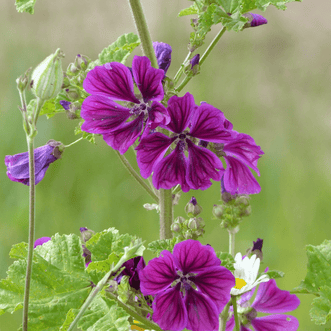
Organic Mallow Mauritiana
This Mallow is a tall plant resembling its distant cousin the Hollyhock and has triangu

Tomato Indigo Pear Drops
Cherry tomato. A unique variety producing small, yellow, pear-shaped tomatoes with purp

Thyme Orange Scented
A unique thyme that has a traditional thyme scent with fragrant overtones of citrusy-or

Organic Bean Runner Cobra
High quality dark green stringless runner bean with 20cm long round pods that are crisp

Organic Broccoli Raab Spring Rapini
Italian specialty, no central head but many tasty leaves and side shoots with green flo

Cabbage Verona Purple Savoy
Popular European savoy cabbage with a purple blush to its leaves that's enhanced with c
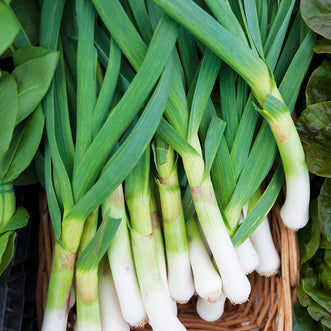
Leek Lungo della Riviera
Tall and slender gourmet Mediterranean leek that's great for tasty and tender baby leek

Tomato Gold Nugget
Cherry tomato. Early to mature, the compact plants are great for small spaces and conta

Tomato Matt's Wild Cherry
Cherry tomato. From the wilds of Mexico, novel blueberry size fruit have full flavour s

Kale Noble
Known for its remarkable resilience and fast growth, a gentle frost not only enhances i

Organic Tomato Sean's Yellow
Highly rated dwarf, yellow tomato with firm juicy flesh and a delicious flavour. Standi

Viola Heartsease Miss Helen Mount
Old-fashioned, English wildflower with petite blooms in blue, purple and yellow. Excell

Summer Savory
Summer Savory is the preferred variety, having a sweeter taste and being less pungent t

Pea Greenfeast
Well known and very popular dwarf green pea for the home gardener. Growing to waist hei
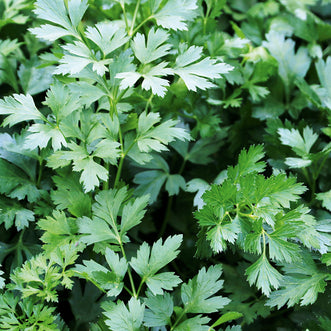
Parsley Gigante Italian
Widely cultivated, flat-leaf parsley such as this is often preferred by chefs and cooks

Beetroot Bulls Blood
An American heirloom that produces beautiful vibrant red, globe-shaped roots. A versati

Coriander Picante
A very popular herb for culinary use, all parts of the plant are edible, but the fresh

Chilli Habanero Yellow
Breathtakingly hot chilli with a Scoville rating of 100,000-350,000. Sturdy one-metre t

Gypsophila Virgo
Delicate stems and myriads of white, double blossoms add a delightful airy grace to any

Poppy Shirley Double Mix
Prolific flowering, double-petalled poppies in an array of shades with petals the textu

Tithonia Sunset Mix
A striking mix of red and yellow Mexican sunflowers for attracting butterflies and bees

Marigold Starfire Mix
A cheerful mix of miniature-flowered marigolds in variations of red, orange and gold. G

Helichrysum Swiss Giants
A classic mix of double-flowered, everlasting flowers in the full colour range. Harvest
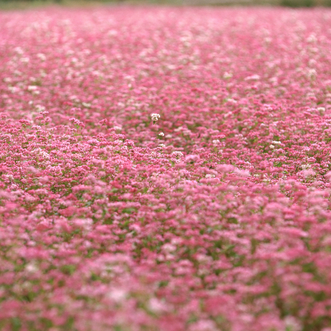
Buckwheat Pink
Pink buckwheat, known for its striking flowers and nutritious seeds, serves not only as

Sunflower Autumn Beauty (treated seed)
Branching, long-stemmed sunflower with solid colour and bicolour flowers in rich earthy

Viola Edible Flower Mix
A colourful "rainbow" mix of mid-sized, round face types perfect for culinary use. Exce

Amaranthus Love Lies Bleeding
Popular for floral work, the cascading red tassels are a striking addition to large bou

Larkspur Summer Sun Double Mix
Vibrant, mixed colours on towering stems. An easy-to-grow cut flower, fantastic both fr

Organic Rocket
Equally good on its own or in a salad, rocket has a distinctive slightly bitter and pep

Organic Beet Erbette
Selection of perpetual spinach, with a thinner stem and light-green leaf. An excellent

Borage
Borage is grown mostly for its bright blue edible flower and is an excellent bee plant

Cucumber Homemade Pickles
Bred for pickling, these medium-green cucumbers have crisp flesh and excellent flavour.

Cress American Upland
A peppery herb very similar to watercress but much easier to grow. The plant yields dar
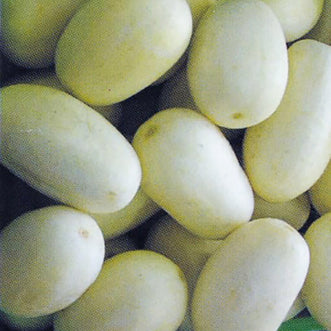
Cucumber Crystal Apple
Apple-size cucumber with sweet taste and crisp juicy flesh that can be eaten thin skin
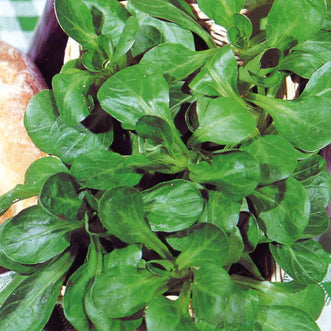
Corn Salad Verte de Cambrai
Also known as lambs lettuce or mache, it deserves wider recognition as an ideal substit

Cauliflower Green Macerata
An attractive lime-green cauliflower with very good flavour that can be a nice change f

Organic Lettuce Iceberg
Heirloom lettuce with crisp juicy leaves that wrap over each other to form a glossy, gr

Radish German Giant
Very large round, red radish with a mild flavour. Amish heirloom dating back to the 18t

Onion White Sweet Spanish
A mild onion, not really for storage due to few skins so best enjoyed fresh. The white,

Centaurea Sweet Sultan Mix
Cottage garden favourite with honey-scented, soft thistle-like flowers in white, rose,
Your Cart is Empty
Know what you’re looking for?
In a hurry? Know exactly what you want? You can enter the product codes here and proceed straight through the Checkout.
Use Quick CheckoutEarn two FREE Packets
You are just $40.00 away from earning two FREE packets.
Purchase value excludes gift cards purchased & delivery charges.
You have reached the maximum FREE bonus packets
Loading...
Subtotal
NZ $0.00
Taxes and shipping calculated at checkout
Simply add the FREE catalogue to your shopping cart.
Catalogue
Kings Seeds
- Choosing a selection results in a full page refresh.
- Opens in a new window.

